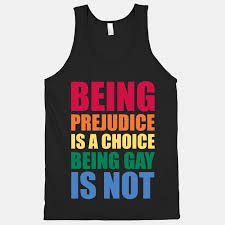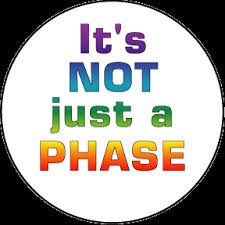(A speech given to a men’s group at the Abilene Country Club, October 14, 2014)
About two years ago my electric circular saw crapped out. It wasn’t the motor. I had bumped it and dropped it enough to bend the frame used for guiding it, and I could no longer cut straight with it. I told Judy, “I wish there were a saw for a left-hander.”
 I went on to explain and demonstrate how difficult it was some times to use a saw designed for a right-hander. Within a few days she found several circular saws for left-handers on-line. I was stunned. I was so accustomed to adapting to a right-handed saw that it had not occurred to me to expect anything different. I helped her pick one out, and a shiny Makita circular saw was my Christmas present a couple months later.
I went on to explain and demonstrate how difficult it was some times to use a saw designed for a right-hander. Within a few days she found several circular saws for left-handers on-line. I was stunned. I was so accustomed to adapting to a right-handed saw that it had not occurred to me to expect anything different. I helped her pick one out, and a shiny Makita circular saw was my Christmas present a couple months later.
These days, every time I use my left-handed circular saw, I am conscious of how much easier it is and how much that small adaptation over the years had made many jobs just a bit more difficult and even more risky.
In my construction work, in my cooking, and in other areas of my life, I have recognized many ways this is a right-handed world that we lefties must adapt to.
Some people are adept with both hands, but most people are predominantly either right or left-handed. We are capable of doing some things with either hand, but we do a majority of tasks more easily with our dominant hand.
We cross your arms, we pick up a cup of hot coffee, we pick up a pen and start to write, we grip a golf club, all without thinking of which hand we want to use.
This is ‘handedness.’ Most people are right handed. About 10% of the population is left-handed.
The decision to use one hand instead of the other for most tasks is automatic, not conscious. It is not a trained behavior. It’s not taught. It’s not a willful act. It’s not a statement. It is innate. We know this now, and accept this without questioning, but it has not always been so.
It has only been within the past few decades that being left-handed has been acceptable in most schools in this country.
 In school I was allowed to write with my left hand, but being obedient to the teacher’s instructions, I put my paper on my desk like a right-hander and then learned to write with my hand crooked around, smearing my ink and getting a lower grade for messiness. The teacher did not instruct me on how to write as a left-hander. Instead, she allowed me to struggle (or ignored my struggle) writing like a right-hander, but with my left hand. In the fourth or fifth grade I realized the problem and decided to reteach myself to write like a left-hander. I turned my paper the other direction and slowly got accustomed to writing the way I should have been taught from the beginning. I got poor penmanship grades that year because I was starting over, but it paid off.
In school I was allowed to write with my left hand, but being obedient to the teacher’s instructions, I put my paper on my desk like a right-hander and then learned to write with my hand crooked around, smearing my ink and getting a lower grade for messiness. The teacher did not instruct me on how to write as a left-hander. Instead, she allowed me to struggle (or ignored my struggle) writing like a right-hander, but with my left hand. In the fourth or fifth grade I realized the problem and decided to reteach myself to write like a left-hander. I turned my paper the other direction and slowly got accustomed to writing the way I should have been taught from the beginning. I got poor penmanship grades that year because I was starting over, but it paid off.
As recently as the 1970’s it was not uncommon to ‘break’ small children of using their left hand, to convert to their right. It was seen as a good thing to do. Many parents saw it as a good thing to do, because they loved their children and wanted them to do things “right.” Teachers given the task to instruct children ‘correctly’ would sometimes severely punish them for trying to write with their left hands. Punishments commonly consisted of tying a child’s left hand behind their chair, whipping the left hand with a ruler or yardstick, or taping the left hand into a fist so the fingers were immobile.
Little children were treated as if they chose to be left-handed and needed to be corrected and converted into right-handedness. Converting a child to using the ‘correct hand’, the right hand, is an agonizing experience for a child who is by nature left-handed.
Discriminating against and punishing left-handedness has a long and sordid history.
There have been times in history and there are still some places in this world today that people are discouraged, even forbidden from using their left hand. You can’t forbid someone from being left-handed, but you can stifle their use of their left hand. They are still left-handed by nature.
A little history: The Latin word for right is dexter, meaning skillful or fortunate, from which we get the word dexterity. The word for left is sinister, meaning evil or suspect. As far back as ancient Rome, faulty assumptions about right and left-handedness were imbedded in the culture.
The writers of the Bible bought into the prejudice against left-handers, which was already prevalent in the world because of its minority status. The righteous are always portrayed as being on the right, the evil on the left. This is not an image to be taken literally but rather an artifact of an already existing prejudice from other cultures.
During the Middle Ages, the church and society, which were one in the same at that time, saw left-handedness as something evil. Left-handers were routinely accused of consorting with the devil. During the witch-hunts of the 15th and 16th Century, left-handedness was frequently used as evidence that a woman was a witch. If found guilty, it was evidence enough for her execution.
During the 18th and 19th Centuries, despite the reforms of the Age of Reason and the Age of Enlightenment, discrimination against left-handers became more engrained and institutionalized. It was during this period that brutal attempts at suppressing left-handedness among children were used, including beating and scalding the left hand.
In the 19th and even 20th centuries, “scientific” studies in medicine and the early disciplines of psychiatry and psychology were used to further discrimination, suggesting that left-handedness was an indication of criminal traits, pathological behavior, and perversity.
All of this was based not on any real scientific knowledge, but solely on the fact that a minority group exhibited a behavior that seemed abnormal to the right-handed majority. Therefore, the experts of the day, which included the church, attributed malicious intent to the behavior they did not understand.
It was not until Paul Broca’s discoveries about the lateralization of the brain in the late 19th century that scientific interest in handedness began. Serious scientific study of brain lateralization and handedness did not really take off until the 1970s. Cruel conclusions are always drawn when people confuse ‘innate’ behavior and ‘willed’ behavior. It has been in just the past 50 years that our culture and institutions have moved past seeing left-handedness as willed behavior.
Left-handedness is one of many traits in which something innate has been treated as willful and therefore seen as deviant. In the same way, with time, experience, and accurate information that left-handedness has become an accepted way of being, a normal way of doing things for 10% of the population, so it is with homosexuality, at least in a growing segment of our population.
 We now know that being gay or lesbian is not a chosen lifestyle. A person doesn’t will himself or herself to be homosexual any more than heterosexuality is a willful choice.
We now know that being gay or lesbian is not a chosen lifestyle. A person doesn’t will himself or herself to be homosexual any more than heterosexuality is a willful choice.
It is an innate part of who an individual is. It is a part of their biology, their neurochemistry, neurophysiology. And increasingly they are a part of our mainstream culture, despite the fact that they make up only 10% of the population, or perhaps because they make up such a sizeable minority.
There are more homosexuals than there are golfers. There are more homosexuals than there are members of any Protestant denomination.
The only Christian group that has more people is Catholics, and even the past few days, papers from the Vatican are suggesting some new guidance in the acceptance of some issues that have traditionally been forbidden, such as divorce, marriage of divorced people, cohabitation, and homosexual relationships.
And yet in our culture, many forms of discrimination are still common and in some cases condoned, including firings, bullying, beatings, disinheriting, even killings by strangers, acquaintances, even families.
There are church and community sanctioned programs aimed at converting the homosexual to something that is natural to most of us, but unnatural to them. Attempts at doing so cause great emotional and psychological harm to the person. You cannot convert a homosexual into a heterosexual; you can only suppress their natural inclinations and their behavior. You can do that with heterosexuals with the right kind of punishment.
 My views on homosexuality have changed dramatically over the years. I grew up with the same biases, fears, and misconceptions about what it meant to be gay as most others in my culture. But with time, some formative experiences, and accurate information, my views have changed.
My views on homosexuality have changed dramatically over the years. I grew up with the same biases, fears, and misconceptions about what it meant to be gay as most others in my culture. But with time, some formative experiences, and accurate information, my views have changed.
During my career as a psychologist, I began doing something in my early sessions with people whose life experiences I knew were quite different from mine. For example, with an African American man from Chicago, I began a session by saying, “As you can tell, I’m not black. In fact, I’m a white guy from a small town in Texas. I have no idea what it is like to grow up Black in Chicago. If we are going to work together and if I’m going to be of any help to you, you’re going to have to teach me some things.” I learned some incredible things.
I began to do that with gay and lesbian clients, telling them that I was straight and didn’t know what it was like to gradually discover that I am gay in the middle of a straight world. I admitted I had always lived with the privileges of being in the majority and had never had to deal with the challenges that came with being “out.” My gay and lesbian clients and colleagues taught me a great deal about courage, maturity, and insight that most of us in the majority do not have to experience so early in life.
One last thought. Judy and I hosted a dinner party a couple of years ago. Around the table were 15 people, 8 cousins and spouses who had grown up together and had known each other their whole lives. They were each in their 80s and 90s. As the delightful conversation and story telling moved from topic to topic, I realized that of those 8 families represented, 6 of them had either a child or a grandchild that was gay or lesbian. Most of those children or grandchildren were in committed same-sex relationships and some had children.
Based on their conversation, it seemed clear to me that some of those around the table had made the connection between an issue they felt strongly negative about, and a family member they loved dearly. Their love for the person had moderated their negative views about the issue. Others at the table had made no such connection.
We all have close friends or family members who are gay, lesbian, or bisexual. They may have chosen not to be open, but if you have any kind of extended family or circle of friends, I guarantee it.
As compassionate people who live in a culture that values freedom of expression and individual liberties, it is our task to make that connection.
1 Comment until now
Very interesting, and well presented, article John. I’m glad Judy mentioned this website in your “New Year’s letter”. I look forward to reading more of your writings.
Add your Comment!